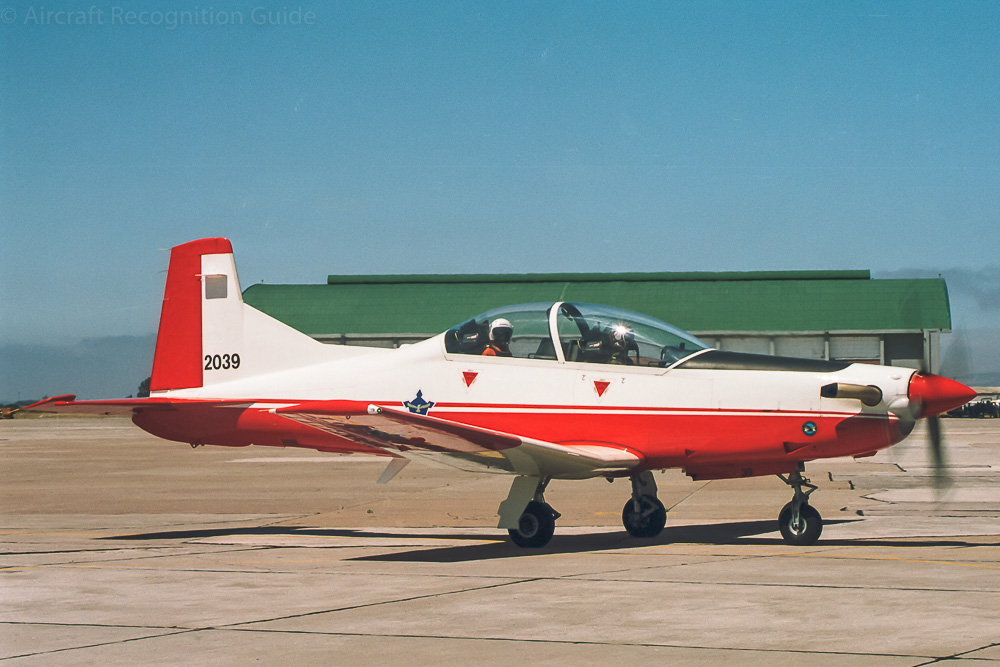
Pilatus PC-7
In essence the PC-7 is the turboprop version of the piston P.3 trainer. The aircraft has straight low wings mated to a slender fuselage with a tandem cockpit in which the instructor pilot sits behind the student pilot. The canopy in nearly one piece, but has a frame in front of the front seat. Up at the front is a turboprop engine driving a three bladed prop. The wings have a part, close to the roots, where they have no dihedral. Only the outer wings have dihedral. Main the gear has no gear doors.
Both the PC-7 and the PC-9 have zero dihedral inner wings. Therefore the canopy with a frame in front of the student pilot is a good recognition point.
The nose of the PC-7 with an intake below the spinner and two exhausts on each side. The nose gear doors are relatively short; they only cover the leg when retracted.
The PC-7's tail is about trapezium shaped and has quite a dorsal fin. There is no ventral fin.
Different versions
The different versions of the PC-7 can be recognised by:
- the size and shape of the dorsal fin
- the shape of the wing-root fairing
PC-7
This is the basic version, as described above.
PC-7 MkII
The MkII version is essentially a PC-9M fitted with the lower power engine of the PC-7. Thus it has a two piece canopy with a frame roughly in the middle and a big dorsal fin, as well as other PC-9 features.
The aircraft was first developed for the South African Air Force (SAAF). Due to the embargo on weapons these PC-7s were not fitted with hard points under the wings and had different avionics. They were called Astra.
The Astra was the PC-7 MkII developed for the South African Air Force. It looks just like a PC-9M.
Confusion possible with
Most confusion will likely be with the PC-7 MkII, as the big canopy gives the standard PC-7 a clear recognition point.
Pilatus PC-9
The most tricky recognition is between the PC-7 MkII and PC-9. The first is basically a PC-9M with the engine of the original PC-7. We have found no external differences between the two yet...
Beech T-6 Texan II
Being derived from the Pilatus PC-9 it is logical that the PC-7 MkII share a lot of similarities with the Texan II. The difference are in the dorsal fin (bigger on the PC-7 MkII at least) and canopy (two piece on the PC-7 MkII).
Pilatus PC-21
The successor of the PC-9 has a two piece canopy, wings with constant (small) dihedral, a trailing link main landing gear and a shark-like top of vertical stabiliser.
Pilatus P-3

The P-3 was the piston powered predecessor of the PC-7. Both have similar lines, except for the wider nose. The P-3 also has a four piece canopy.







